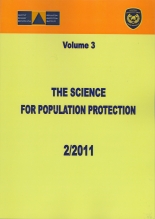MONITORING OF RADIATION SITUATION IN THE EARLY PHASE OF EMERGENCY ON NUCLEAR FACILITY – ANALYSIS OF ALL TYPES/KINDS OF MONITORING/MEASUREMENTS APPLICABLE FOR CORRECTION OF MODEL PREDICTIONS/PROGNOSIS
DOI:
https://doi.org/10.71934/Keywords:
Radiation monitoring, Monitoring network, Nuclear emergency, Model prognosis, Data assimilation, Bayesian filteringAbstract
The paper concerns monitoring methods of radioactive pollution in
environment in the early phase of a radiation accident. The main aim of the paper
is to identify those monitoring methods suitable for purposes of improvement of
model-based predictions of radiation sutiation by the means assimilating
radiological measurements from terrain. Data assimilation methods are statistical
methods based on Bayesian filtering. As a specialized software system for
application of data assimilation in radiation protection we demonstrate product
HARP which offers advanced interactive tools for assessment of consequences of
accidental releases of radionuclides into the atmosphere. The measurements
available from different channels (dose-rate monitoring networks, ground-based
mobile monitoring, aerial monitoring) provides valuable information on radiation
situation. However, due to different time scales, spatial scales of the type of
measured quantity, the combination or even comparison of the channels is not
straightforward. The interactive subsystem ASIM of the system HARP provides
effective methods for merging this complex data into a consistent analysis
describing radiation sutiation on terrain.
Downloads
Published
Issue
Section
License
Copyright (c) 2025 The Science For Population Protection

This work is licensed under a Creative Commons Attribution-NonCommercial-NoDerivatives 4.0 International License.
Published under license


